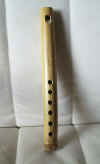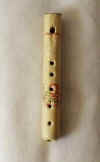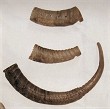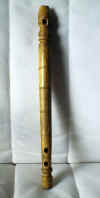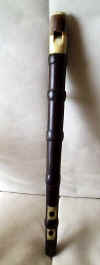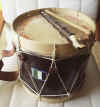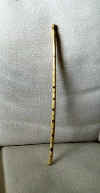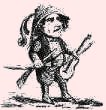|
Click on the images to enlarge it
| Pito de caja de puro: Another bevel aerophone. It is a variety of the previous one, but fact with a cigar box and a cork. It is copy of one picked up by the artisan Luis Angel Payno in Soria. Thise comes us to demonstrate the wealth of the Traditional Culture, and the adaptability of materials to build the instruments with what one has by hand. | |
|
|
|
Pito maragato: Bevel Aerophone. It is a flute of three holes whose complete tonal scale is gotten overblowing it. It is played inseparably with the" tamboril" (a tabor), one in each hand. The model of the picture is a variety of the area of the Maragatería, in León, and it is made in a wooden piece. It is family of the "gaita charra" ,from Salamanca, the "chifla", from Zamora, the "gaita extremeña", the "flauta rociera" from Huelva, the Aragonese "chiflo" and even the Basque" txistu", although the tunings and forms are different. This family of instruments survive in the western area of the peninsula, as well as in the border area with Portugal, in Tras os Montes and the Alentejo. There are also ones in Ibiza . |
|
|
|
|
Pito de centeno: Simple reed aerophone. It was manufactured with a dry shaft of ryet. There are practiced a fluke in the closed end and a series of holes in the other end. It is an instrument of shepherds' hobby or of infantile toy, being common in the middle of the peninsula, mainly in Castile and León. In other areas it exists a similar instrument but fact with cane or reed, like it is the case of the Balearic"xeremeieta". |
|
|
|
| AEROPHONES I |
|---|
